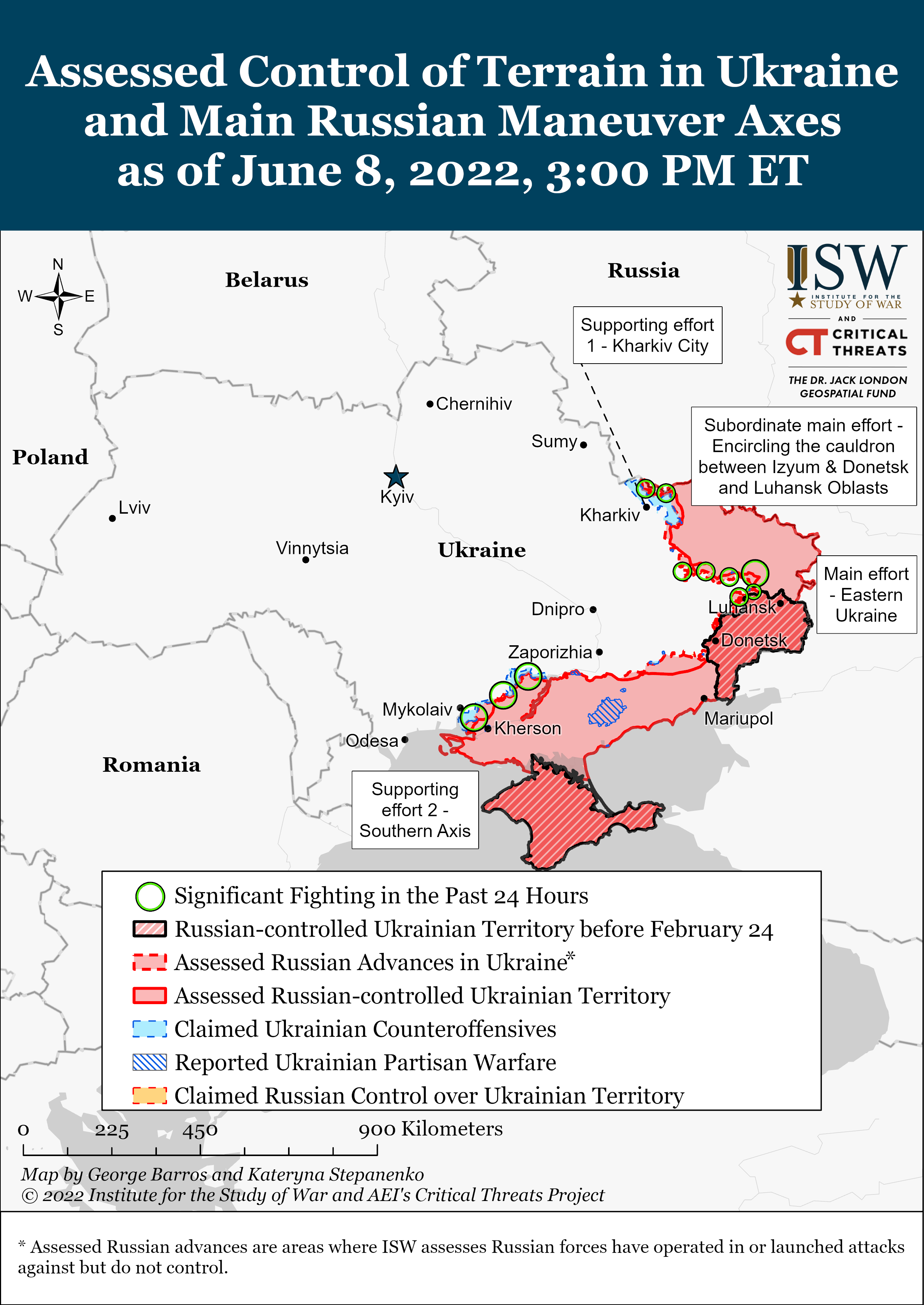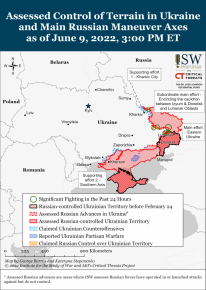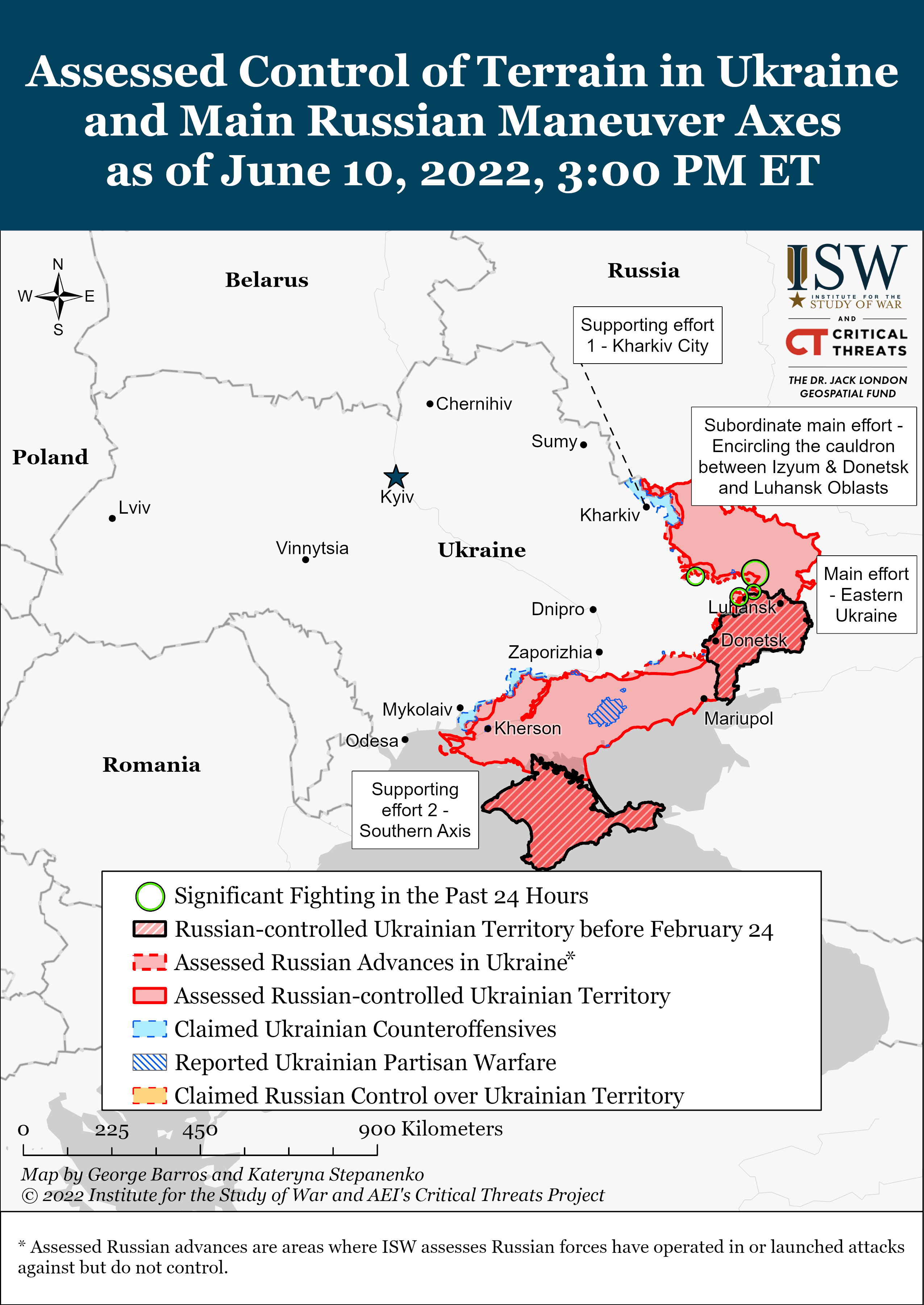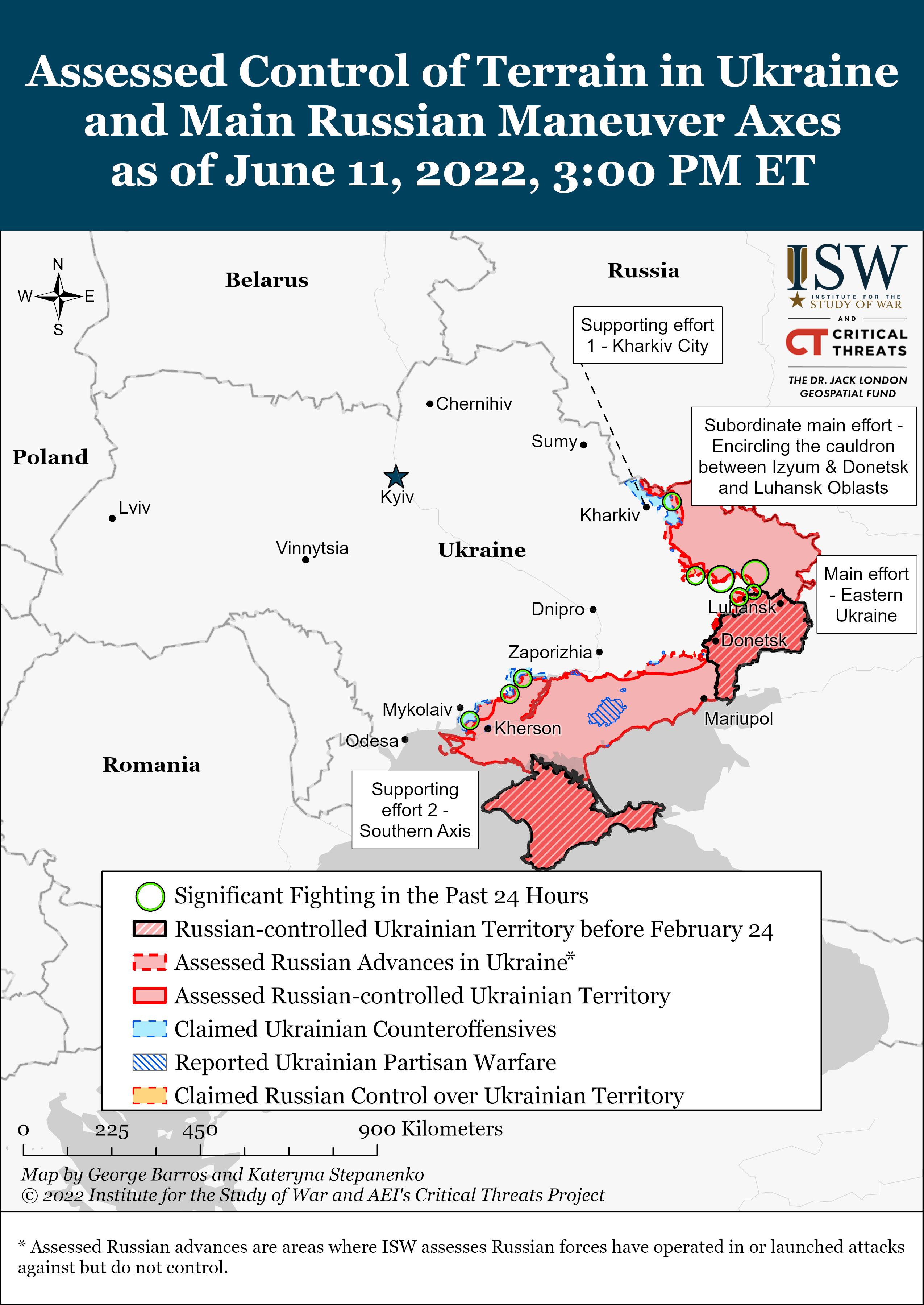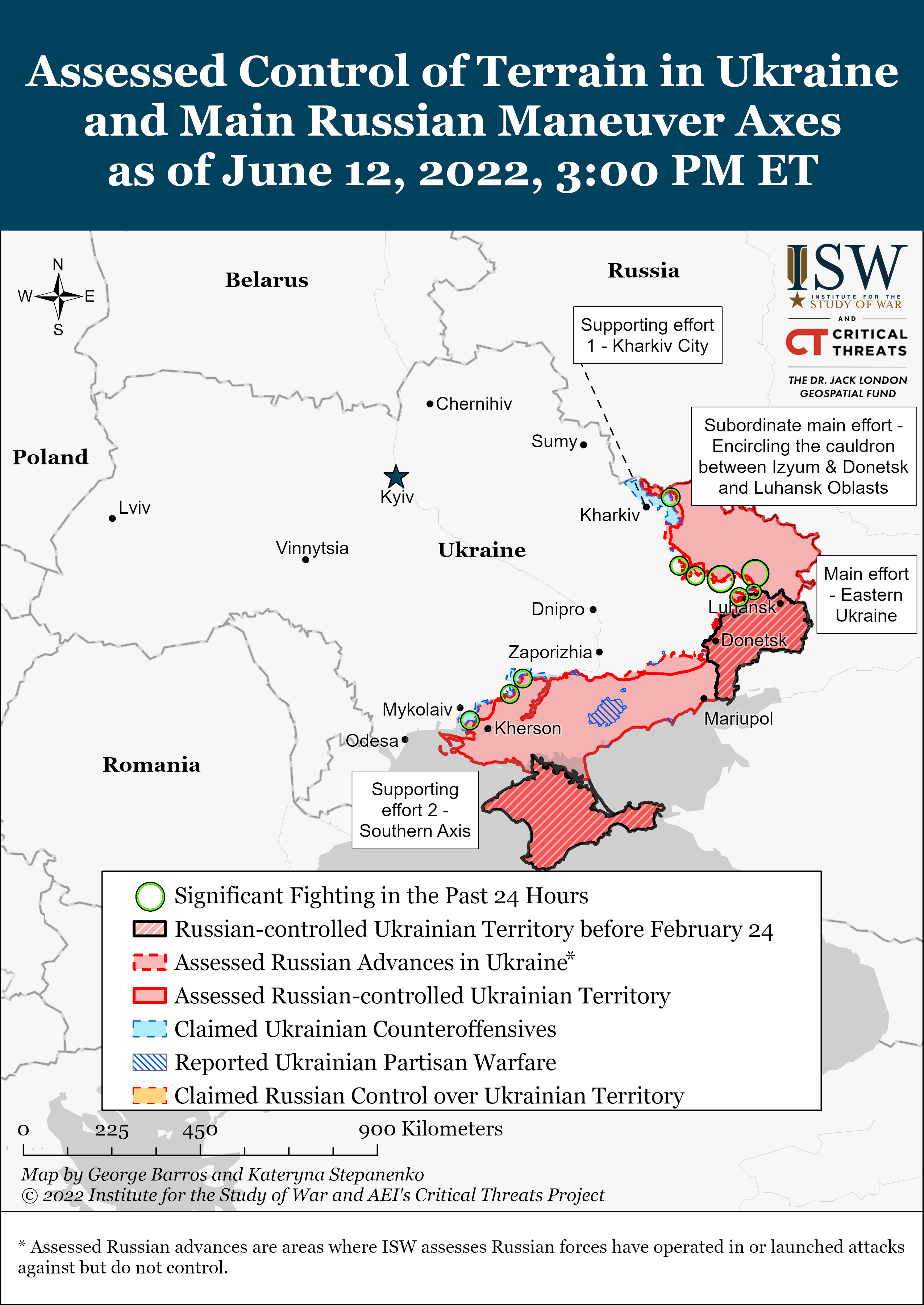Misc.
Russian artillery strikes, allegedly Krasnopol'. Location and context unclear.
Российская артиллерии уничтожает "опорник" ВСУ Обстрел велся высокоточными боеприпасами "Краснополь". Корректировал огонь расчет разведывательного беспилотникого. @anna_news

t.me
Interesting footage of a Russian UAV following around a Ukrainian tank and apparently trying to direct an artillery strike against it, but the artillery misses repeatedly.

vk.com
Allegedly a Russian or rebel copter dropping a hand grenade.
На видео момент сброса гранаты Ф-1 с российского беспилотника по позициям ВСУ.

t.me
Chechen irregulars in action, location and context unclear.
Кадры одного из боестолкновений с участием бойцов чеченского спецназа. #Донбасс @new_militarycolumnist

t.me
Ukrainian T-64BVs apparently indirect firing their main guns.

vk.com
Ukrainian fighters setting a booby trap with a grenade in a box of shells. Presumably this will be left behind as they retreat.

vk.com
Destroyed Ukrainian BTR-3s, location and context unclear.
Уничтоженные украинские бронетранспортёры БТР-3

t.me
Ukrainain Furiya UAV downed alleged by a Russian Strela-10. I have doubts about it, being in such good condition. I suspect it may have crashed on its own or been brought down by EW.

vk.com
Ukrainian Spectator-1 UAV apparently downed. Location and context unclear.

vk.com
Ukrainian T-64B1M captured, possibly knocked out. We've seen one before, and I'm not sure if this is the same one.
Warning footage of corpses.
Бойцы группы "О" затрофеили Булат, это ВСУшная модернизация Т-64. Внутри мёртвый мехвод.

t.me
A captured Ukrainia Kozak armored car. Location and context unclear.
Трофейный украинский бронеавтомобиль *КОЗАК*

t.me
An overrun Ukrainian position with a Soviet Maxim gun and a DP-27, allegedly footage from Pacific Fleet Marines.

vk.com
Another Russian Su-25 returns to base after a MANPADS hit. On the one hand this is a testament to the resilience and survivability of the aircraft. On the other hand, this isn't news, and while it's better then getting shot down, it takes the aircraft out of action for a long time if not permanently. If this becomes a pattern, Russia will have to limit it's use of them or change tactics.
Основной канал по адресу @bomber_fighter

t.me

vk.com
Ukrainian forces have been spotted operating a rare BTR-4MV and a BMP-1TS. The former is a prototype BTR-4 upgrade that wasn't in production pre-war. It's unclear whether this is just a prototype vehicle sent to the front or if production of the type has begun.

gurkhan.blogspot.com
Apparently Ukrainian territorial defense mounting a improvised RCWS on a Lada passenger car.
Нехватка бронетехники у ВСУ и тербатов, вынуждает не только клянчить технику у стран НАТО, но и обратиться к опыту ИГИЛовским побратимов. Управляемая турель с КПВТ, предназначена для установки в ГАЗ-24 "Волга" - довольно большой автомобиль. Броня на расчёте.

shusharmor.livejournal.com
A Ukrainian MT-12 with it's radar still attached.

vk.com
Ukrainian M113 column with .50 cals. Location and context unclear.
This channel has moved to a new location

t.me
More footage of Ukrainian Dana howitzers.

vk.com
Ukrainian troops riding in an Mi-8/17, location and context unclear.

vk.com
Ukraine is apparently attempting to return a pair of captured T-90As to service.

gurkhan.blogspot.com
Allegedly Columbian fighters in Ukraine.

vk.com
An interestingly article discussing Russian counter-battery fire. It argues that Russia is relying on the BM-30 firing a cluster sub-munition rocket as one of the main tools for out-ranging and taking out Ukrainian artillery, and even air defenses.
Тут у нас народ периодически жалуется, типа наш Минобороны гавна им не додает красивых картинок в стиле со Святого Байрактара: как красиво живут владетели турецкого изделия, какие шикарные картинки у них получаются с канадской оптики по поражению вражеский техники модно,…

afirsov.livejournal.com
Russian military using one of its armored trains in Ukraine. Note the BMP-2s, they're used as gun platforms. The tank can also carry an MBT on those cars for a similar purpose. These were earlier spotted passing through Kherson region into Zaporozhye region, but it's unclear where they are now.
Бронепоезд группы "О"

t.me

vk.com
Russian Buk-M3 operating in Ukraine.

vk.com
Brief interview with a Russian Marines UAV team that does firecorrection for artillery.

vk.com
A Russian T-72B3, uparmored with rocks, Syria-style. The lack of tactical markings raises questions. Could this be a captured T-72B3 in Ukrainian hands? Is this even in the war zone?
Камушки в качестве защиты. А еще в Сирии были бордюрные камни... Кстати, достаточно аккуратно сделаны

shushpanzer-ru.livejournal.com
Russian repair unit working in support of the war effort. Note at the end we can see the tail end of a BTR-60. It's highly unlikely that Russia is returning the type to service. It's far likelier that it's one of the BTR-60 chassis based engineer command vehicles.

vk.com
Various uparmored Russian trucks.
Бурушкой звали коня Ильи Муромца. Второй импровизированный бронегрузовик УРАЛ из одного подразделения ВС РФ. Источник: https://vk.com/feed?w=wall-151878956_2752213

shushpanzer-ru.livejournal.com
УРАЛ с импровизированным бронированием. Военные мягко намекают, что производство Уралов с бронёй стоит нарастить как можно скорее. Источник: https://vk.com/feed?w=wall-151878956_2752213

shushpanzer-ru.livejournal.com
NATO/EU.
A Czech machinegun in the hands of allegedly a Belorussian volunteer fighter, fighting for Ukraine. Interesting damage to the flash hider.

vk.com
There are reports that Finland will supply armored vehicles to Ukraine. Finland currently operates badly outdated BMP-2s and MT-LBs, which make natural candidates.

vk.com
An train in Romania carrying allegedly Italian Puma APCs and what I think are Centauro MGS (the post calls them Strykers). It's also carrying a bunch of trucks and some cargo containers.

vk.com
Lithuania has purchased 6 Estonian VTOL UAVs for Ukraine.
Литва закупила для Украины шесть эстонских разведывательных БПЛА EOS C VTOL. #Украина @new_militarycolumnist

t.me
UK company QinetiQ is planning to supply 10 mine clearing robots to Ukraine.
Британская оборонная компания QinetiQ поставит Украине 10 саперных роботов TALON для разминирования территорий. ТТХ: длина - 86,4 см, высота - 42,7 см, максимальная масса от 52 до 71 кг (в зависимости от установленного комплекта целевого оборудования), может брать на себя полезную нагрузку...

t.me


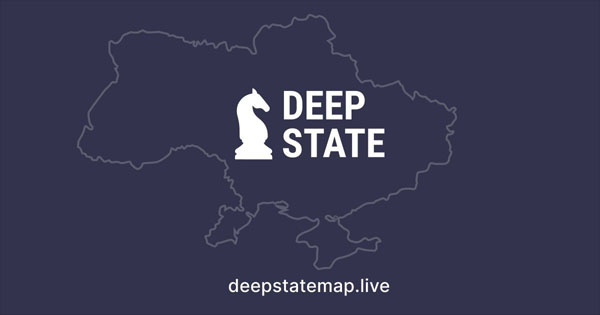





































.jpg)




